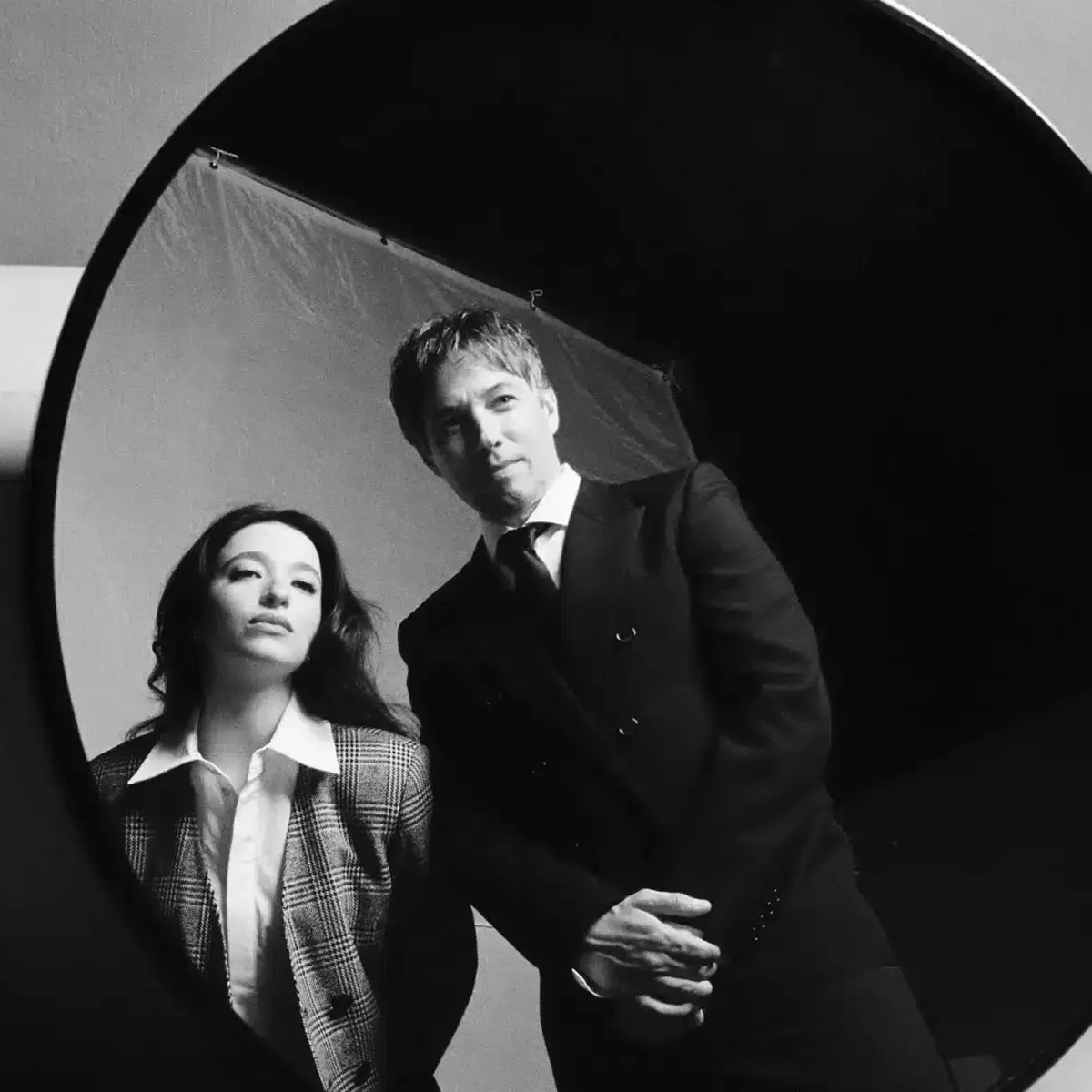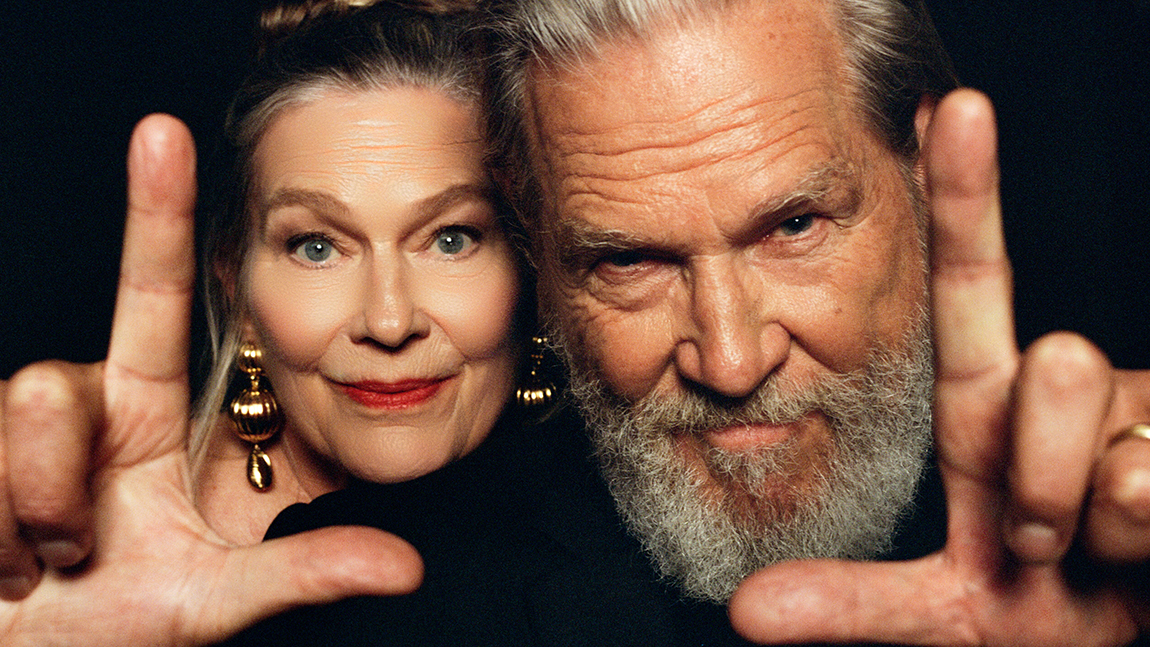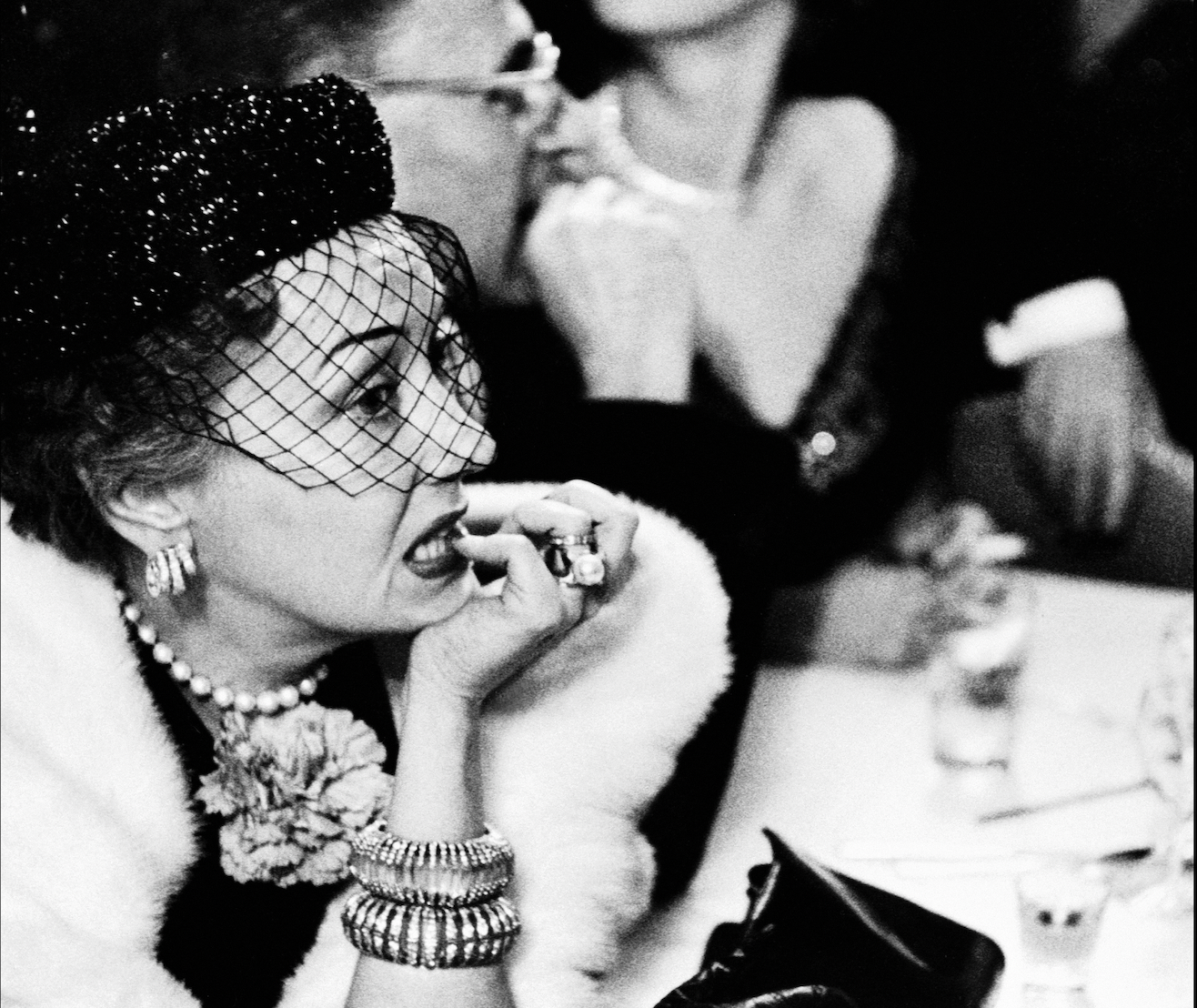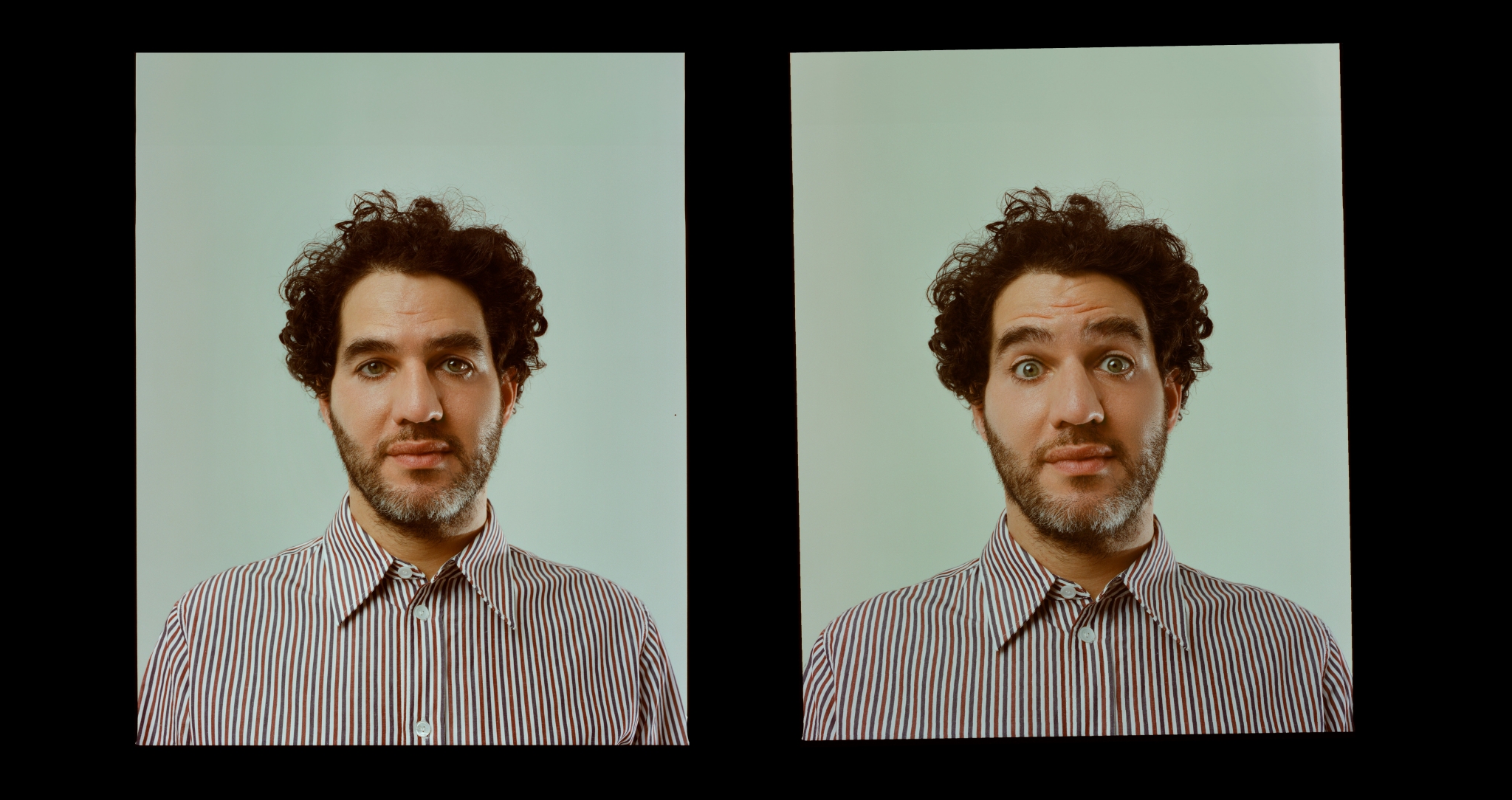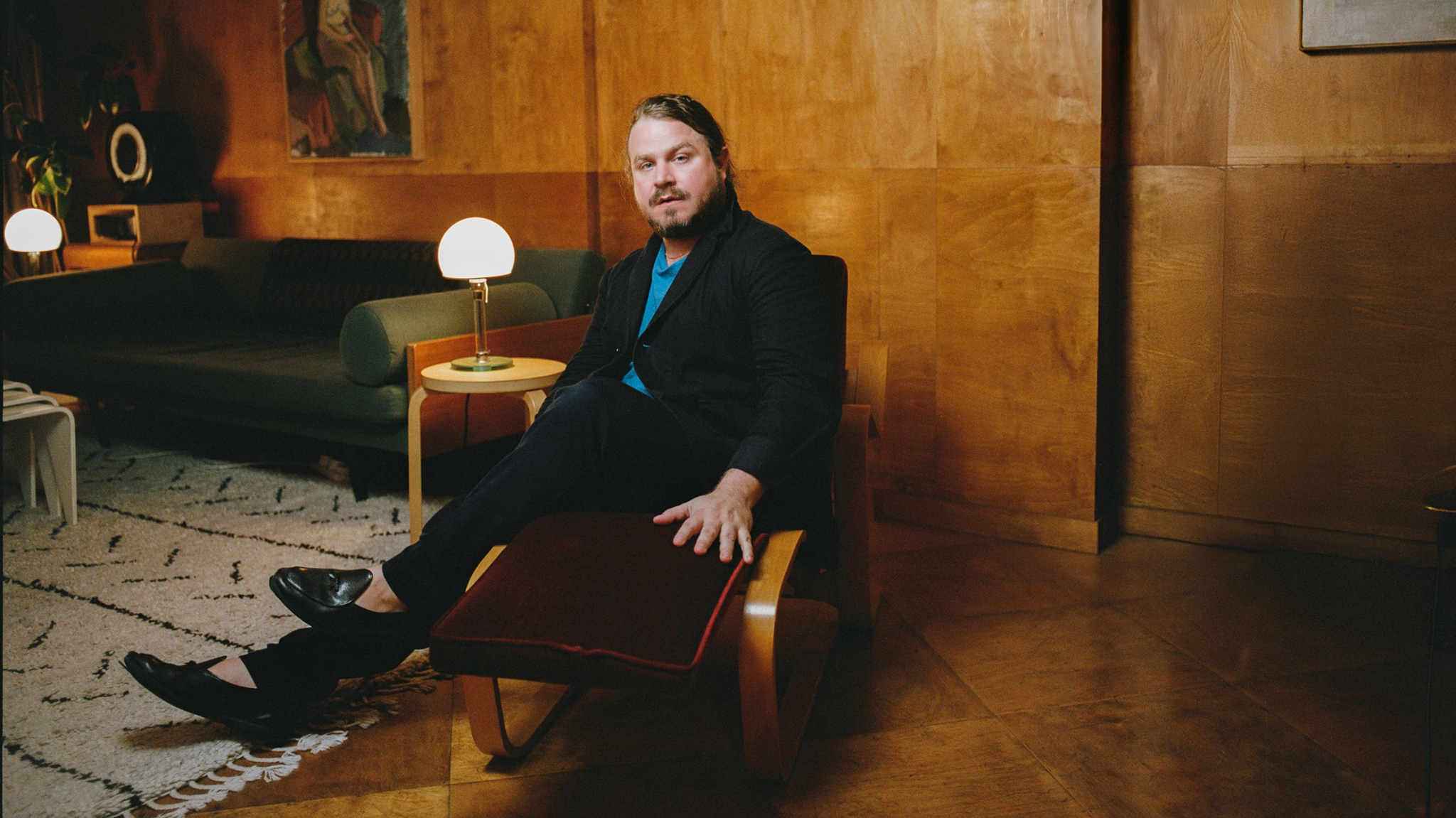

Before The Brutalist achieved its sweeping success at the Golden Globes, the filmmaker Brady Corbet joined A Rabbit’s Foot at the Modernist Isokon flats for an intimate and unique photoshoot by Fatima Khan. Organised by his friend, the director Fridtjof Ryder (of the 2022 drama Inland), the setting was a studied decision: the top floor penthouse is a space that welcomed some of the very architects that inspired Adrien Brody’s character László Toth. After the shoot, Ryder spent the evening speaking with Corbet at a nearby pub, for a conversation Ryder recorded and wrote for us below.
Dusk is erasing the buildings one by one. I am standing, awaiting the arrival of Brady Corbet, the co-writer & director of this year’s The Brutalist (2024), amidst the wet, frayed ends of the London day. I have spent the last week hunting for a setting suitable for the piece and feel I have found it at long last. This place seems inextricably linked with Brady’s film to me this evening: his influences and his entire project. Emigrating at the dusk of the Weimar Republic and in the early days of Hitler’s ascendency, three brilliant children of the Bauhaus movement (by whom The Brutalist is vastly influenced) found their way here. Marcel Breuer, of Jewish Hungarian-German descent, relocated to London at the suggestion of Walther Gropius, along with László Moholy-Nagy, with whom Adrien Brody’s fictional architect László Tóth shares a first name. They arrived right here at the modernist Isokon Flats in Hampstead, in the summer of 1935. One can imagine them, autumn pulling to dusk, standing on the open-plan balcony, their thoughts turned into the twilight, into the rain.
An hour or so later Brady and I begin by discussing another figure who is especially influential to his work: the German author WG Sebald. Fictionalising the European history of the 20th century in part novel, part biography, part travelogue form, Sebald’s books have had a great impact in helping Brady create what he describes as “virtual histo- ries”. These are stories that involve a high density of historical detail and fact, but with characters at the centres that are fictional amalgamations; to avoid distraction, to immerse us in a kind of total history rather than shallow games of comparison or impersonation. In The Brutalist, Tóth, who has survived the Holocaust, emigrates to America, escaping the zone of postwar Europe, only to find America just as hostile and complicated. He is employed by the steel magnate Harrison Van Buren (Guy Pearce), to undertake a great building project for him. This is where Sebald’s inspiration becomes relevant. The centre of what makes Sebald so disturbing, Brady argues, is “Considering how gentle the books read—carefully written, carefully constructed—they feel like a warm breeze. But every story either begins with or ends in genocide.”
This is very much the case in Brady’s latest film, and in his breakout debut The Childhood of a Leader (2015), in which we watch what could be seen as the creation of the ur-conditions for the The Brutalist—the birth of a future fascist leader, during the signing of the Versailles Treaty. The film wedged between these two, Vox Lux (2018), though set in 2017, is also a part of this project, describing the schizo-culture that America will become through its brutal diet of capitalist realism; a country in which a school shooting helps create a young pop star out of its sole surviving pupil. As such, though Brady’s films are full of bombast and Sebald’s books quiet reflection, these works defy easy descriptions, they are about the wound, not the act of harm. “The sort of dizzying, uncanny relationship with history and narrative Sebald has, I would say that if I aspire to anything in my life that one day I could make a film that was as…” Brady pauses for a moment. He wants to get his words right. “They are so arresting and they are works of fiction but free of contrivance, it is personal and so rare that you feel that you are reading the work of someone who is writing for themselves, not for an audience they are anticipating.”
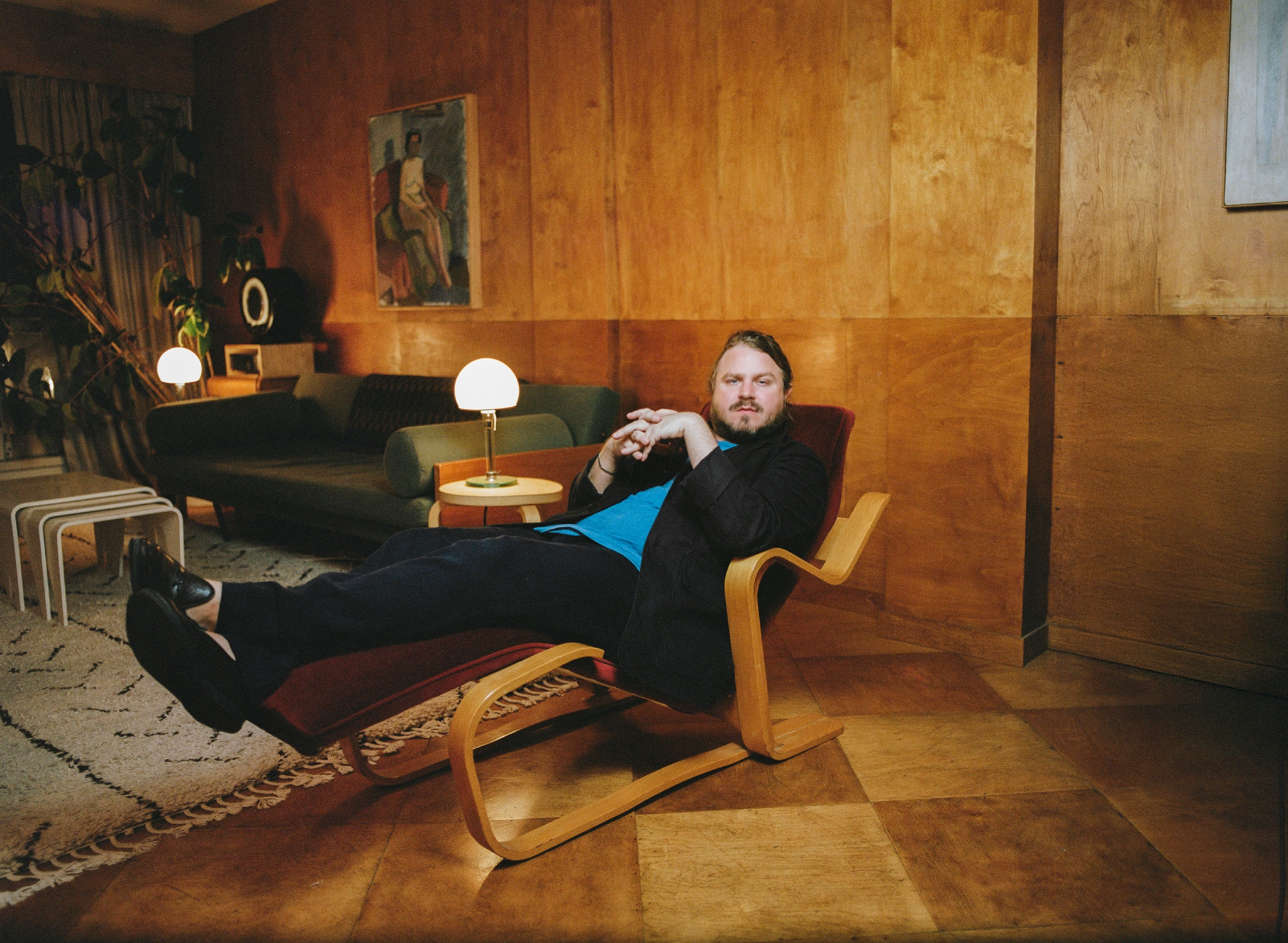
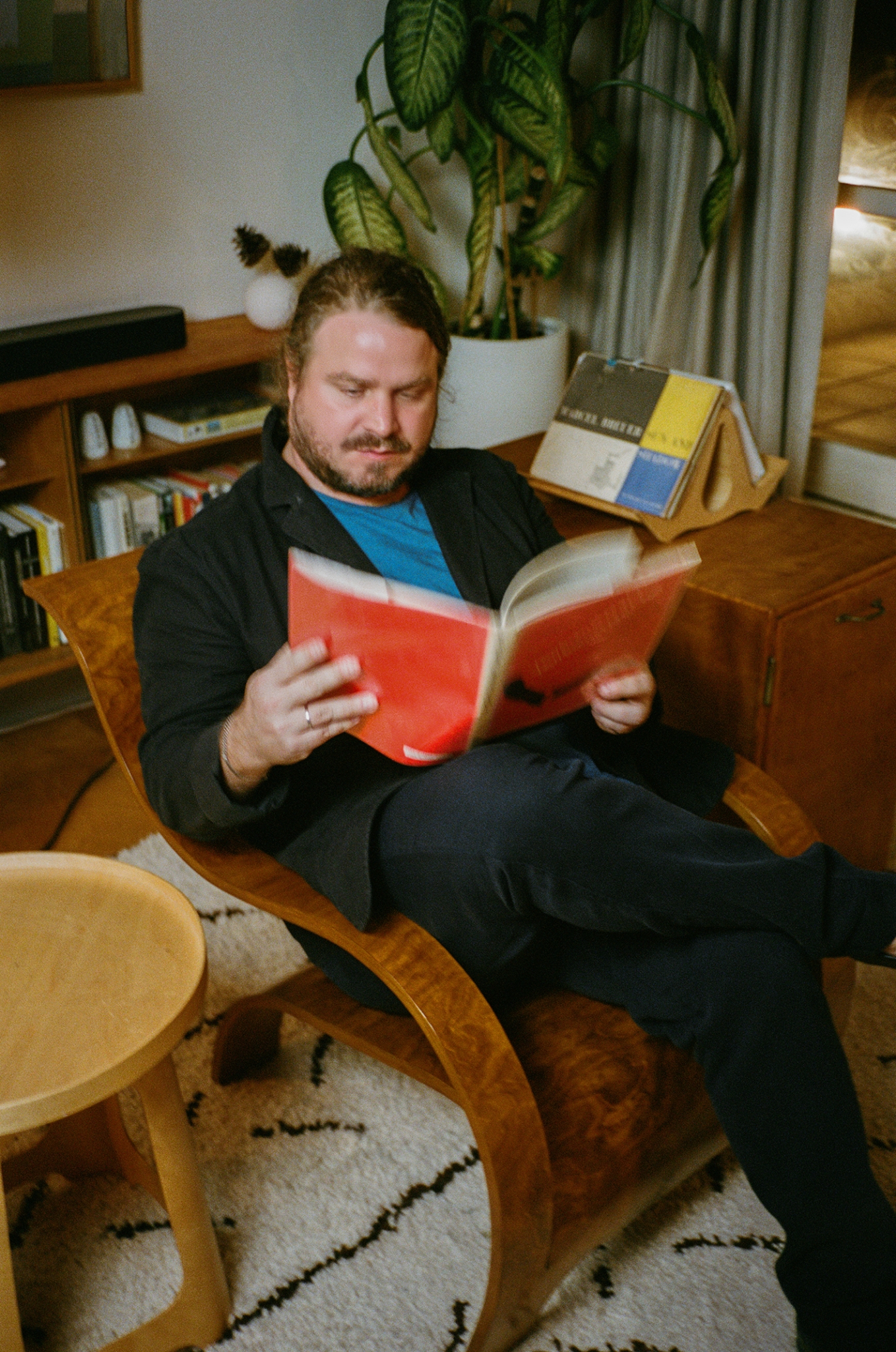
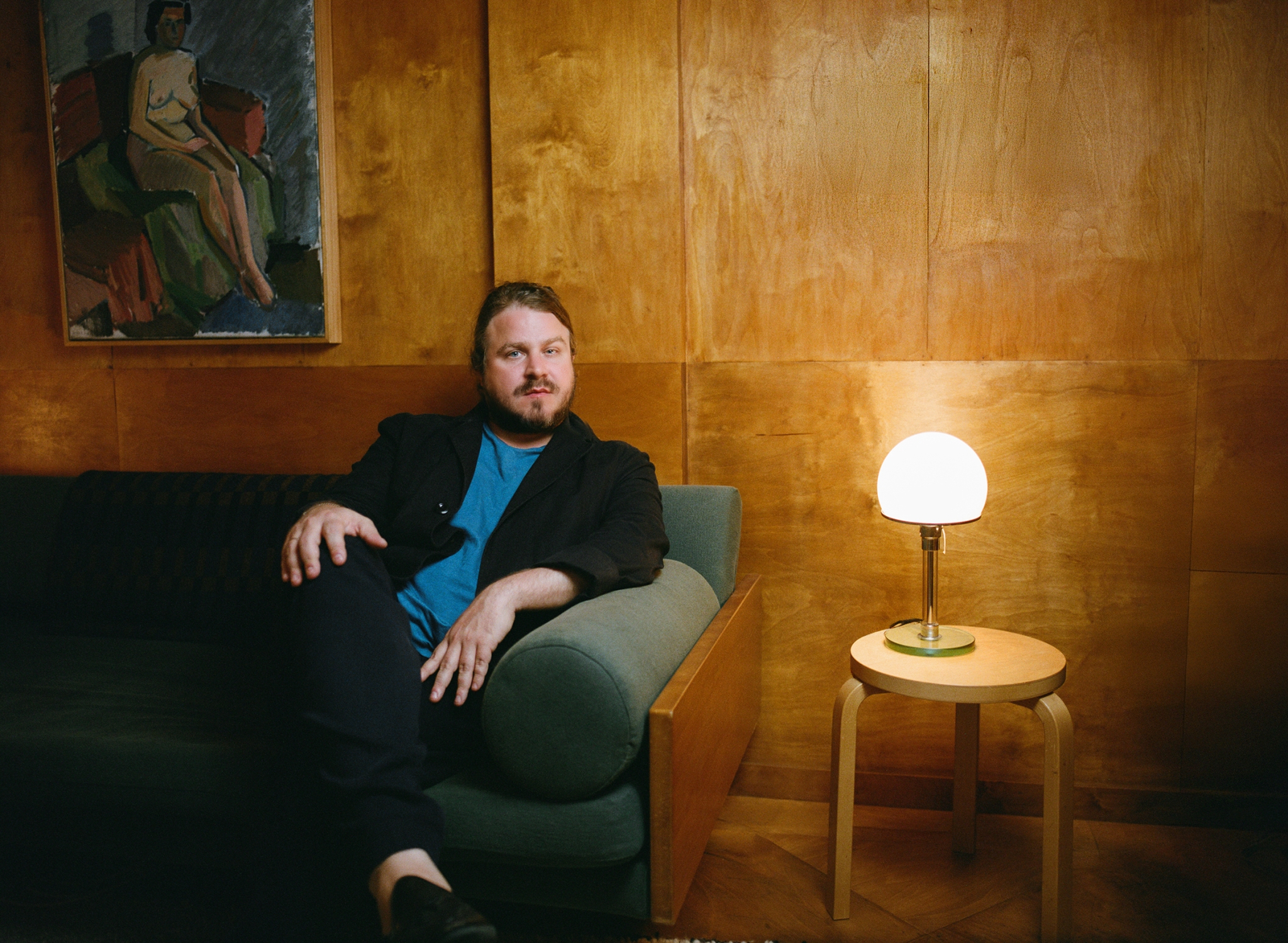
Brady and his partner in life and work, the filmmaker Mona Fastvold (who co-wrote The Brutalist), seem to be striving for exactly that. They met on The Sleepwalker (2014), Fastvold’s debut film, which Brady helped write and played a leading role in. He has a running joke about how she, two years older, groomed him while they were scribbling away. Sat across from him now this humour seems to stem from both a deep well of admiration and a cheeky sense of how romantically their lives can be painted; two broke young filmmakers working together, so intimately, on these films. In reality, independent filmmaking is tough going all the way. “I have a really strong memory of us doing a screenplay for a movie that we were only paid $13,000 for. Mona had the laptop on her pregnant belly and I was like—this is just really fucked up.” They have ghostwritten no fewer than 24 screenplays together in the last decade and have survived, by the skin of their teeth, mainly from writing. Needless to say, as a young filmmaker myself, all of this rings home to me like a gong the size of the moon.
What we have not touched on is that Brady is deeply respected as an actor’s actor in his own right. Who would have known that the young performer running around in 2004’s Thunderbirds movie (an economic high and creative low-point for the enfant terrible) would soon be working with Michael Haneke, Gregg Araki, Sean Durkin, Lars Von Trier, Ruben Östlund, Olivier Assayas, Mia Hansen-Løve, and Bertrand Bonello? But as Fastvold and Brady were preparing to welcome a child together, aged 26 and 24 respectively, he was also preparing his first feature. “It was pretty psychotic. I left behind a career that was paying some of the bills at least—to make that movie. We had a baby on the way and no way to support our family. The stakes in the beginning were so high on that project.” But when Fastvold encouraged him to revisit a half-finished draft of his, the co-writers got to work on Childhood. “There’s something humiliating about not completing the task in front of your friends, your family. And the reality is if I have burned five years on a project that never gets made, what have I done all of this for?” People keep asking Brady about all the newfound success “…but it’s just so detached from the reality of what it actually means. I had a few beautiful moments along the way, but that is not what is definitive about the experience. The beautiful moments were like 40 days out of thousands of sleepless nights.”
“You guys are masochists,” I say. He can do little but agree.
Marcel Breuer not only immigrated here, but designed for the Isokon building and company. Brady was just sitting in one of Breuer’s original chairs, cracking jokes, as he was photographed. There’s something to be said for trying to enjoy the success, now that it’s here. In the time I have known him, Brady has transformed from an exhausted, near-drowning artist to Oscar frontrunner. It’s quite a wild transformation to witness.
I tell him how Breuer also designed the Isokon’s bar, which welcomed the tenants in the evenings. And what tenants! From Egon Riss to Agatha Christie and Arnold Deutsch, the infamous Russian spy who recruited the Cambridge Five. In that hotbed atmosphere this place became a centre for fringe, immigrant, othered experience, and the conversations that must have been held here…The strange quiet of history ran through us as we wrapped up our photo session—that murmur we can sometimes sense, of things that speak still, but in voices changed in pitch, in timbre.
The Brutalist is an attempt to translate such past voices and cut through the mythology we surround them with by describing physical, fallible people. The flight from fascism to capitalism leads only to never ending and newly cloaked abuses, unspoken but carried in the bodies of László Tóth and his wife Erzsébet (Felicity Jones) all the same. Tóth struggles with heavy heroin addiction that stalks his every failure, and osteoporosis from the camp at Buchenwald binds Erzsébet to a wheelchair. In a masterstroke their individual pains will be mingled during the lovers’ true reconnection, in a sequence both horrific and deeply erotic. However, there is hope here. Transcendence itself is physical. “What I said to Felicity Jones is that László ages badly and you go backwards. By the end of the movie you are Audrey Hepburn: osteoporosis is not something that gets better, it’s degenerative. But she transcends reality to get onto her feet again.”
“I’m sorry, but if you’re not making a movie about sex, love or death, what is it about? It’s not about anything… “There’s a lot of this straight-edge ‘I think most sex scenes shouldn’t be in a movie unless they are purposeful’ and that’s interesting. I feel completely the opposite. I always think that every movie would be better if they fuck for eight minutes as the credits roll.”
Brady Corbet
“I always try to tell people, it’s a feeling for history,” Brady says. “The way that history has been narrativised is that there are a series of bullet points of cause and effect. And I think that ambient feeling, where all parties are guilty, there is something in the water, there is something in the air…” “Ambient fascism,” I say.
“Exactly. Ambient tyranny. That is something I am so endlessly compelled by, wrestling with, and I’m doing my best to sharpen how to speak about that. It’s sort of my lifelong project in a way.” He pauses again. He has fallen into something here; whether it be finding a personal relationship to the young fascist in Childhood in working through something he went through as a young person, acting from seven years old, “I psychoanalysed myself at that age just as much as reading the childhood experiences of Mussolini,” or talking about how Guy Pearce was the only actor who really understood that the wealthy industrialist patron he plays, and who hires László to design a community centre. “He tells you exactly who he is. But you spend the next two hours cutting him slack and giving him space. This guy is clearly a bigot and he announces that immediately. This behaviour comes from the cycle of abuse that exists.” I was struck by how the greatest moment of individuality for Joe Alwyn’s Harry Lee Van Buren, Pearce’s son, is in his xenophobic proclamation to László of “We tolerate you”. That is the furthest he gets out from under his father’s shadow and it’s insanely ugly, I tell Brady, who nods encouragingly. “It is the closest thing to a racial slur that exists in the film,” he says. “There’s also this interesting thing that I was talking about a lot early on. It’s actually very difficult to represent antisemitism without a slur. It was important to me that there are no slurs.”
We discuss needing to perceive the violence inherent in a language, or in its absence. This is something very fundamental to The Brutalist, using the form of the American epic to speak about assimilation in the mid century—finally also the unspoken violence between artist and capitalist patron. When László presents his proposed design for the Doylestown community centre to local Pennsylvanians, he enacts this very elision: negating questions about his background, subsuming them into the fact that his employer is a practising protestant and therefore the townspeople should be assuaged. “Not only am I a part, but I am a part of the new whole,” the building will declare, says László, “This is my only persuasion of relevance.”
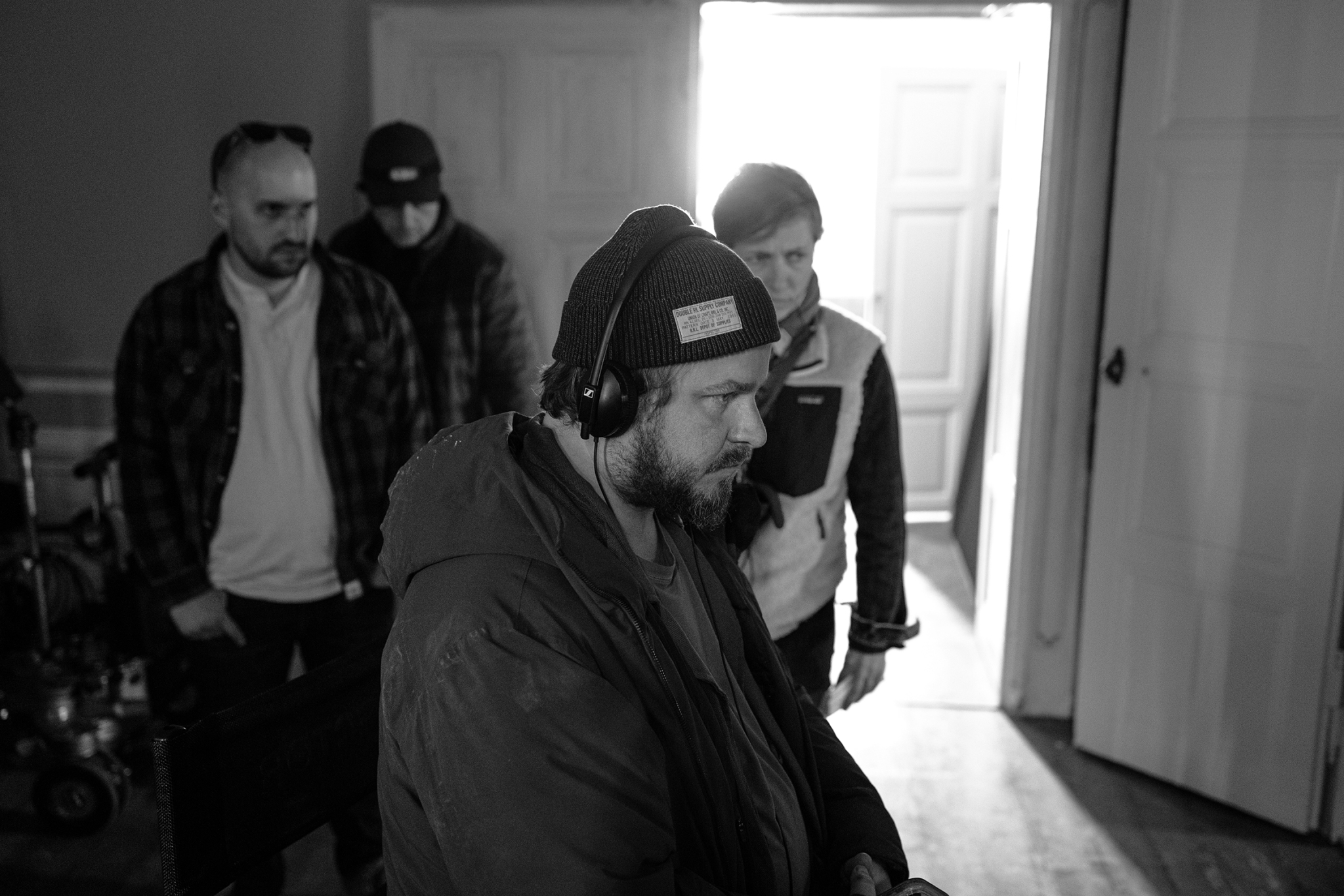
Brady Corbet on set during the filming of The Brutalist
That violence must of course be expressed in the very design of a film, as a part of its language. “I was thinking a lot about height. We always tried to cast shorter extras than Adrien. I wanted to shoot him like Gregory Peck in Spellbound (1945) and his silhouette. There’s this otherness about Gregory in a very different context, the trauma and memory loss—but I wanted László to feel like that. It was just small things about making sure he is dressed differently and the accent helps. But it was always this big conversation about how we feel about everyone’s prejudice. Sometimes you can achieve it editorially in rhythm.” Dávid Jancsó, the great Miklós Janscó’s son, is Brady’s longtime editor. They discussed expressing these concepts through literally eliding time. “I’d just be, like, in this scene I want to mix up the timeline, I want the reality to become liquid, this way there is something premonitory about it.” I mention the dream sequence in which we hear a snatch of voiceover that in the course of the film we come to understand is from 30 years in the future. “Exactly,” Brady responds excitedly. “You assume this is a flashback. And there’s something so powerful in it if you realise it’s a premonition.”
The Brutalist is way weirder than it says on the tin, full of strange psychosexual tension and borderline magical-realist undercurrents. “It’s important for the film to be contemporary and radical because if it wasn’t,” Brady says, “it would be rehashing. I’m really not interested in homage.” This also speaks to the complexity of László’s relationship to Erzsébet. “It is very important to eroticise our grandparents’ generation,” Brady says to me, straight-faced. “To remind people not all survivors are altruistic. It’s so insulting to represent them as being altruists—it’s dehumanising. We can only empathise with people for being perfect? Fuck that.”
There is something important in the film’s tactile sense of the past, in which people are flesh and blood—this brings startling life. “I’m sorry, but if you’re not making a movie about sex, love or death, what is it about? It’s not about anything. There’s a lot of this straight-edge ‘I think most sex scenes shouldn’t be in a movie unless they are purposeful’ and that’s interesting. I feel completely the opposite. I always think that every movie would be better if they fuck for eight minutes as the credits roll.” We laugh, but what Brady is getting at here has real validity. “All kidding aside, what we are looking for is characters to be emotionally undressed. Because it is life-affirming and validating to see people naked and comfortable and enjoying themselves. It makes us feel closer to them. I think there is nothing wrong with movies being sexy. I think more movies should be sexy. Even if it’s not sexy, it still serves a purpose which is like looking under the hood of a car. There is a reason we go to museums and these places are filled to the gills with portraits of nude men and women.”
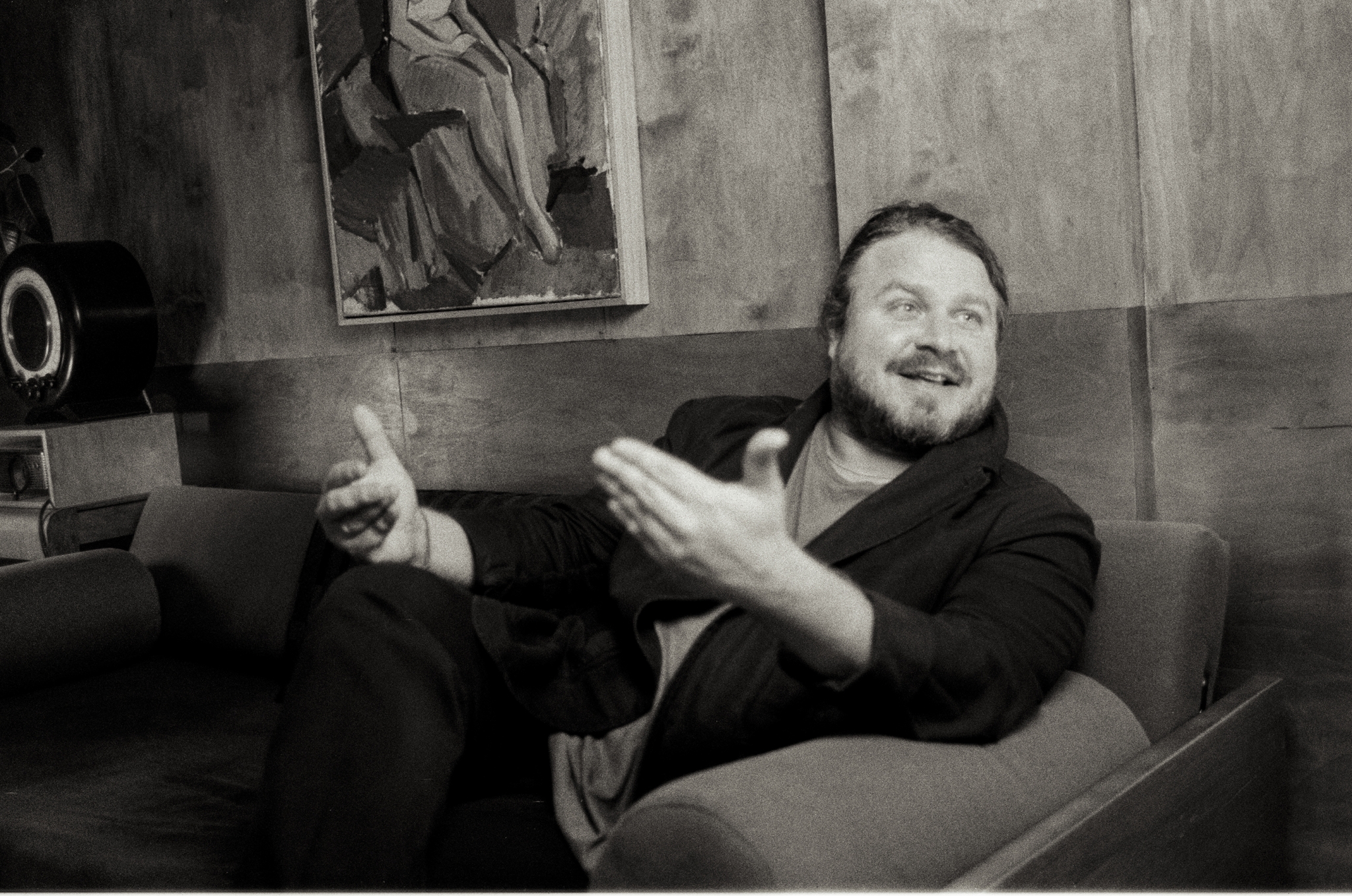
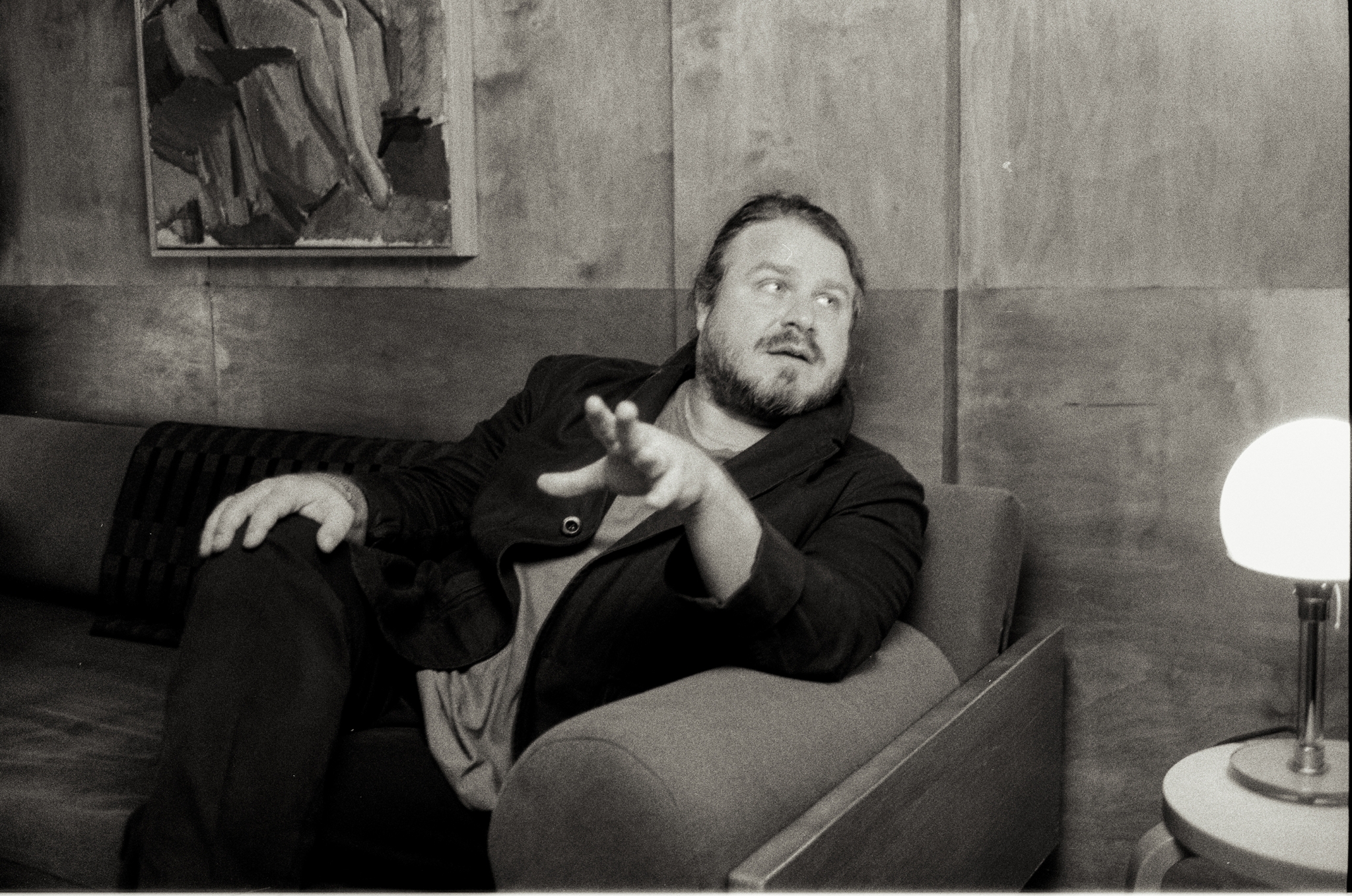
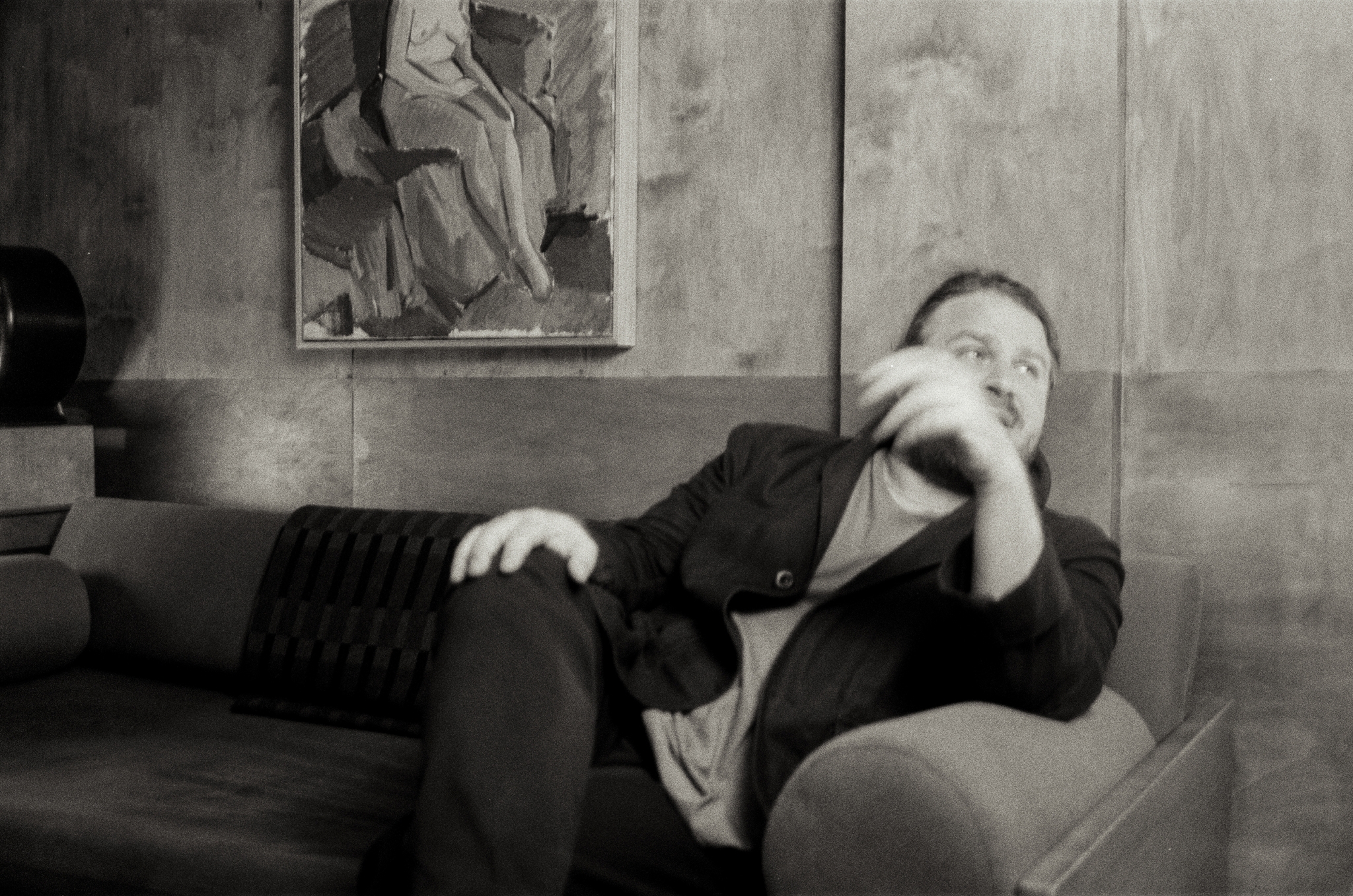
While Brady doesn’t consider The Brutalist a political film, politics is very much on his mind—the political cannot be worthy, but must be a deeply narrative, social project he feels. We lament the lack of a life force in the West’s left-wing parties. “This is like the first time in history—and it’s my number one frustration—where liberals are so conservative. It drives me insane. What the fuck happened? Also I think that one thing that is fascinating is, how do I describe this,” Brady is really thinking as a father now, a person seeing his daughter growing into this new world and a country that has actually just elected a man on the far-right accused of sexual abuses. “I feel so terrible for very young people right now. Because of a handful of people’s horrific crimes, they are constantly afraid that they are crossing a line, these are conversations I’m getting ready to have with my own child. It’s gonna be complicated.” A sigh escapes him, serious now. “I want to find a way to let her know that it is natural to be sexual, it is ok, it is not something to be ashamed of or embarrassed about.”
Cinema, like architecture, provides a kind of church when the world feels confusing. This tension in its construction, between a place for people to gather and a place to self-express, is The Brutalist’s very essence. Brady talks about the architecture of Peter Zumthor and its inspirational role “I’m obsessed with him. He always chooses materials that are so integral to a place. And you feel it. But he’s also working in sensorial ways as well. The memorial he did for the witch trials in Norway, there’s something there you can’t capture in a photograph. It’s covered in a material like old sails, and the wind is so extreme that the place violently shakes. Constantly. It is like chaos. Like screaming. The building is screaming.” Not to spoil anything, but the central fictional construction in The Brutalist is in essence a howl, a monument to all that cannot be expressed in language, cast instead in concrete, in carrara marble.
To Brady, making commercial cinema often feels like a kind of smuggler art, an attempt to trick investors into paying for something with subversive value. This translated directly into the feverish hours leading up to The Brutalist’s premiere in Venice. “The moment that everybody is under the assumption that you are having the most validation, the greatest experience of your life—it’s very fucking rare you are. The day of the premiere is like walking the gun. We had a lot of the same investors as in Mona’s new movie. So my biggest fear that day was that my film’s failure would negatively impact her project. My wife, and partner, is in the middle of an equally ambitious movie for completely different reasons. It was the worst day of my life.” But for the actual process of fighting for what you are making, Brady has strong words. “When I’m speaking to a filmmaker that’s trying to make a first movie I’m like, ‘Don’t change the what, change the how. Nothing is as expensive as you think it is.”

Brady Corbet shot by Fatima Khan
“I always try to tell people, it’s a feeling for history… The way that history has been narrativised is that there are a series of bullet points of cause and effect. And I think that ambient feeling, where all parties are guilty, there is something in the water, there is something in the air…”
Brady Corbet
Finally we land on Brady’s formative years. Regarding the film’s architectural themes, it is noteworthy that his uncle studied at Frank Lloyd Wright’s Taliesin West architecture school and that Fastvold had a midcentury Norwegian designer in her family, but Brady doubts this acts as a definitive explanation for their interest in the subject. He points to working in a bookstore around the age of 12 as a source of his curiosity. “This couple owned a very progressive bookshop that had loads of gay and lesbian literature but they also had these insane first editions and it was the beginning of eBay. I lived about 45 minutes from Aspen. It was a much more blue collar part of the valley but it was really beautiful and they would go to estate sales and buy these books off of dead rich people.” Because they couldn’t pay Brady as a child, they would pay him in books, resulting in an extraordinary collection of first editions. It’s a good story—young Brady cherishing these objects from another time. I can see it now. But where does it end?
“Mona and I had an apartment fire seven or eight years ago and I lost a lot of them. It was right when financing for Vox Lux fell apart and I will never forget it, lying in bed, turning over to Mona and saying, ‘Well, at least we have our home.’ I looked at her in bed and was like ‘I am really happy here, I feel lucky.’ We were in this tiny but extremely beautiful apartment in the West Village right across the street from the Village Vanguard. We had this stoop we would just hang out on all day and then it was all burned to a crisp.”
Make of this what you will. “Destruction and regeneration are the things that are definitive of the lived experience,” he says. They picked themselves up, Vox Lux found its financing, and they moved on into the various futures they were busy creating. May they keep scrambling cinema forever. We say goodbye and I wander past the blue commemorative plaque on the body of the Isokon Flats. It carries the names and dates of Breuer, Moholy-Nagy, and Gropius’s residence here. It is the only trace now, besides a couple of Breuer’s chairs. The rain has started up again and the balcony on which Brady stood just three hours ago is soaked and the sky inkstained towards midnight. I wonder whether the ghosts approve, whether the spirits of a place have anything to say, even those who only lived there for a year, five years… about what just happened, about this day, this filmmaker’s interpretation of their lives, their histories. I shoulder my coat against the rain and pass on towards the tube. And behind me they speak, even now. Hear them.

